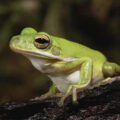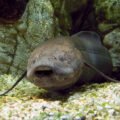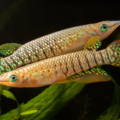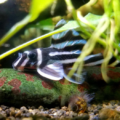Learn how to handle an exotic yet popular pet frog from the Ceratophrys family, the Pacman Frog! This guide includes tips on feeding, handling, terrarium setup, temperament management, and much more.

Pacman Frog: Bold Colors and Big Appetite
One South American amphibian that gets a lot of love as a house pet is Ceratophrys ornata, a.k.a. Pacman frog or South American horned frog.
These vibrant pet frogs are entertaining house pets because of their distinctive features and traits, like ambushing prey and nocturnal activities. They have wide mouths and round bodies like the vintage Pacman game character but there’s more.
Before you commit to keeping a horned frog pet, you must understand its basic and advanced needs as explained in this pacman frog overview. You’d learn every detail of Ceratophrys ornata care, from its habitat to diet, recommended handling, and health care tips to maximize its lifespan.
Author’s Note: Checkout our post on The 7 Beginner-Friendly Amphibians for a complete guide to choosing the right amphibious pet for first time keepers.
Let’s begin.
Native Habitat & Behavior

The Argentine horned frog’s natural range spreads across humid grasslands & forests from Argentina to Uruguay and Brazil. So, the Ceratophrys ornata environment is rich in vegetation and moisture.
Argentine Horned Frog Behavior
Due to the marshy lands and moist soil in its natural environment, this species developed some frog survival adaptations like burrowing and cannibalism.
This species also has a sharp bite to defend itself against predators, so be careful when handling or avoid it completely.
Before digging deeper into the pacman frog’s habitat, here’s a review of its physical appearance and size.
Physical Appearance & Size

This species is a large pet frog with a round body, wide mouth, and horn-like eyes. An average Ceratophrys ornata size stretched between 4 and 7 inches, with the females growing larger than the males.
Your pet’s head and wide mouth cover more than half of its body, making it its most distinctive feature. Despite its wide mouth, this frog has eyes that are close together with horned sockets. You can also identify these wide-mouthed amphibians by their deep green colored bodies covered in red or black markings.
This coloration also aids in distinguishing sexes since the male Pacman frogs have darker throats and nuptial pads on their forelimbs. Note, however, that there are rare variants of this species, like the albino Pacman with different pinkish bodies and red markings.
After correctly identifying the pacman frog species, you can now build an enclosure for housing it.
Enclosure Setup & Substrate
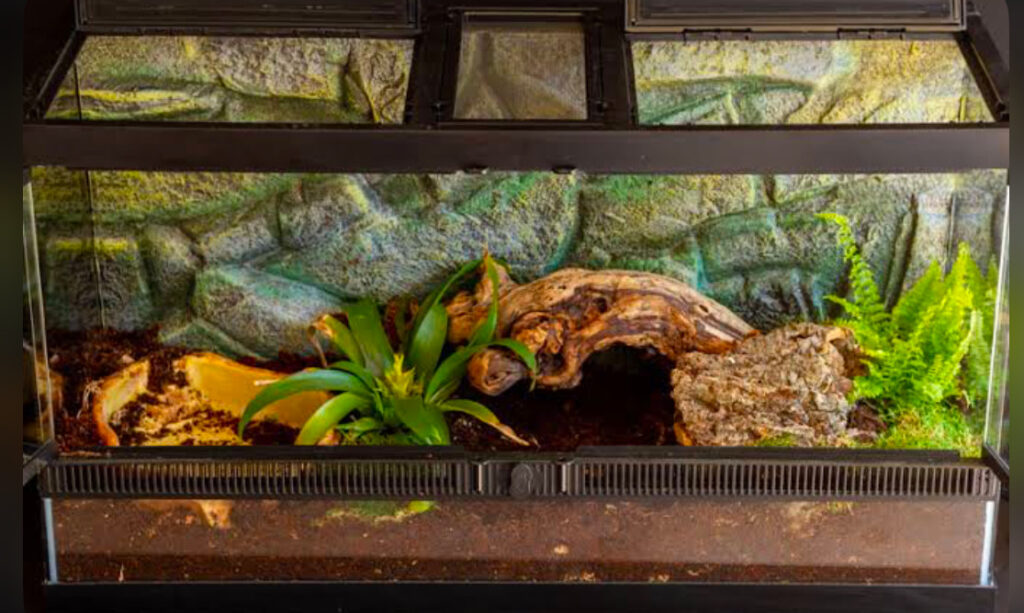
Typically, frog terrariums are designed vertically, especially if they’re arboreal, but you’ll need a long, horizontal enclosure for your Pacman frog tank setup. The length accommodates its wide and large body better.
Pick a size that’s at least 10-20 gallons large, then decorate it with a bioactive terrarium base by combining a drainage system with your substrate.
Substrate
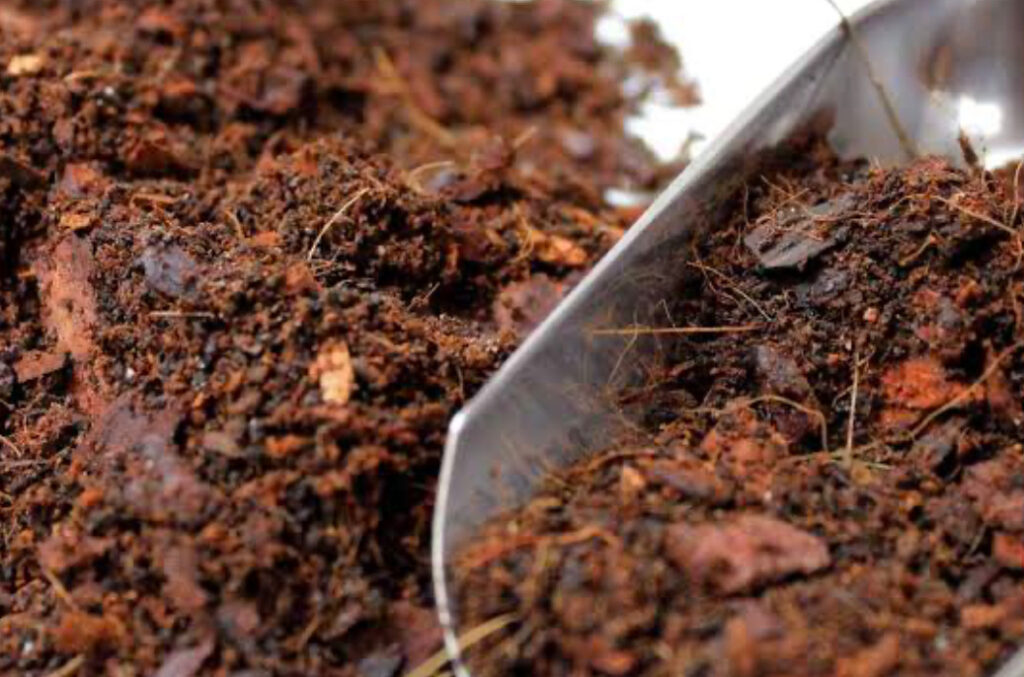
A coconut fiber and clay ball combo is the best substrate for pacman frogs. It allows for deep and moist layering that’s gentle on your pet’s skin when they burrow, unlike gravel. Adding leaf litter and organic matter to the substrate not only maintains a moist amphibian habitat but also encourages beneficial microorganisms.
Decor

Pacman frogs like hiding, so add live plants like pothos and snake plants to your terrarium. Although they don’t swim, these amphibians need periodic soaking in clean dechlorinated water bowls.
Don’t add climbing plants to discourage your pets from attempting to climb out and escape the enclosure. For extra security, cover the tank with a breathable lid.
Temperature, Humidity & Lighting
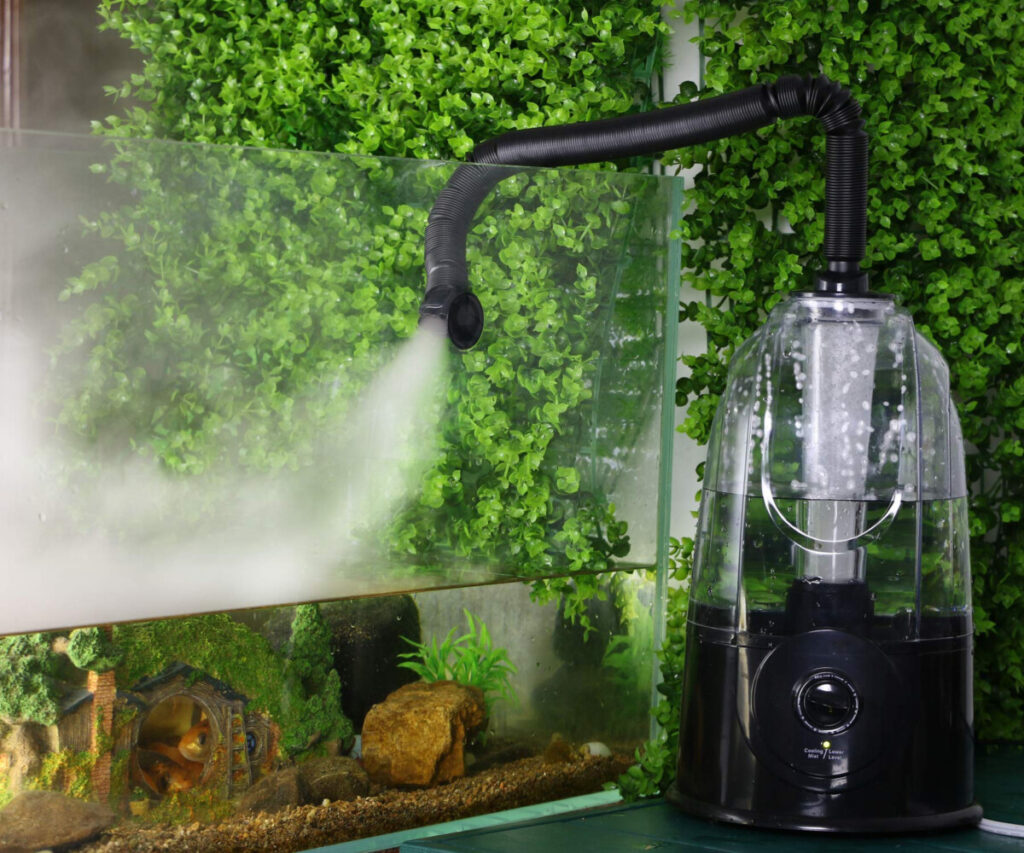
Found On Amazon
Simulating a tropical microclimate creation in your Pacman frog’s habitat is a careful combination of heating lamps and misting systems.
Temperature
An ideal pacman frog temperature is warm by day and cooler at night. So, set it to 75–85°F by day and drop it by 5°F at night.
Humidity
A 60–80% Ceratophrys humidity keeps the substrate moist without waterlogging it. You can add a mister as well to keep the terrarium humid at all times.
Heating
Luckily, you don’t need special lighting for your Pacman frog to thrive. However, the terrarium still requires a standard amphibian heating setup.
Diet & Feeding Guidelines

Earlier, we highlighted its wide mouth, and now it’s time to discuss what to feed horned frogs with a large appetite and sharp bites. The Ceratophrys ornata diet is carnivorous, which means it can eat insects and small fish alike.
Pacman Frog Feeding Guide
Feed insects and worms to your pets as staples. You can dust them with crushed supplements for multivitamins like Calcium and Vitamin D3, which aid bone development.
| Insects | Crickets |
| Worms | Mealworm, Silkworm, |
| Rodent (Treats) | Small Mice, Pinkies |
| Cannibalism | Smaller Frogs, Lizards |

Other large amphibian feeding tips to aid digestion and ensure proper nutrition include:
- 2-3 times weekly feeding
- Size the prey before feeding your frog. An ideal side will fit in its mouth
- Remove remnants to avoid overfeeding
- Avoid food with an exoskeleton as it caused impaction
- Mix staples with treats and other food types for balanced nutrition.
Temperament & Handling
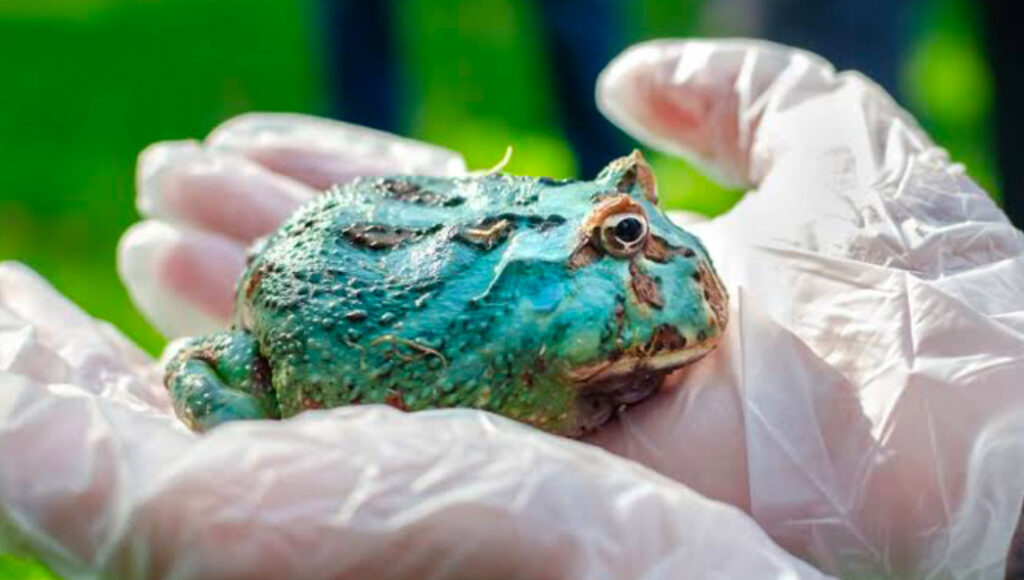
When feeding your Pacman frog, you may want to handle it, but resist the urge. The Pacman frog’s temperament doesn’t allow such. So, here’s how you can feed your pet without upsetting its mood.
Managing Its Temperament
Adopt aggressive pet frog care practices when dealing with species like Pacman frogs.
Keep this species alone to avoid territoriality and predatory behaviors. Next up, you must be careful when feeding your Pacman frog because it’s an aggressive feeder. This pet frog can bite; so avoid frequent handling.
Handling
Avoid its feeding strike response by using a prong or dropping the food in the terrarium without direct contact with your Pacman frog.
Instead of handling Ceratophrys ornata when interacting with this pet, it’s best to do so from a distance. Your mantra should be observation over petting.
Health & Common Issues

Managing your pacman frog’s health care can be challenging because of its dislike of handling and eating habits.
However, with the specific amphibian care tips in this guide, you can achieve success and ensure your pet is in optimal health throughout its stay with you.
Firstly, you must identify potential horned frog diseases, then figure out their signs, treatment, and finally, prevention protocols.
Common Health Issues
Pacman frogs are prone to the following diseases
- Obesity from overfeeding, especially because they’re already naturally large
- Impaction from eating insects with an exoskeleton
- Skin disease from poor water quality when it dips.
Prevention and Treatment
To ensure Ceratophrys’ wellness, always quarantine new prey items before feeding them to your pets. Change the dipping water frequently, and always size insects before feeding your Pacman frogs.
If they get any of the above skin diseases, immediately check the terrarium condition and improve its parameters, quarantine the affected frog, and apply antibiotic medication as prescribed by an exotic pet veterinarian.
Lifespan & Owner Commitment
In the wild, a pacman frog’s lifespan typically lasts up to 4 years due to its exposure to uncontrolled environmental conditions. But when in captivity, they live longer.
By following the instructions in this Ceratophrys pet guide, you can extend its life for another 6-10 years. So, choosing this species means you’ll invest in long-term amphibian care as detailed in this guide.
That includes a terrarium setup, long-term feeding planning, and periodic health and wellness checks. Because of the intensity of the care schedule, Pacman frogs as pets are best for patient keepers.
Conclusion: Is the Pacman Frog Right for You?
Pacman frog is a unique amphibian choice, but it is worth your effort. Although horned frog pet care can be challenging, understanding the basics in this overview makes it easier.
The basics of keeping the pacman frog species as pets cover tank setup, diet, managing its temperament, and health maintenance. As a low-activity pet with a bold look, the Pacman frog is great for display-focused keepers.
So, read through the Ceratophrys pet advice listed above and assess its needs against your capacity before making a choice.


